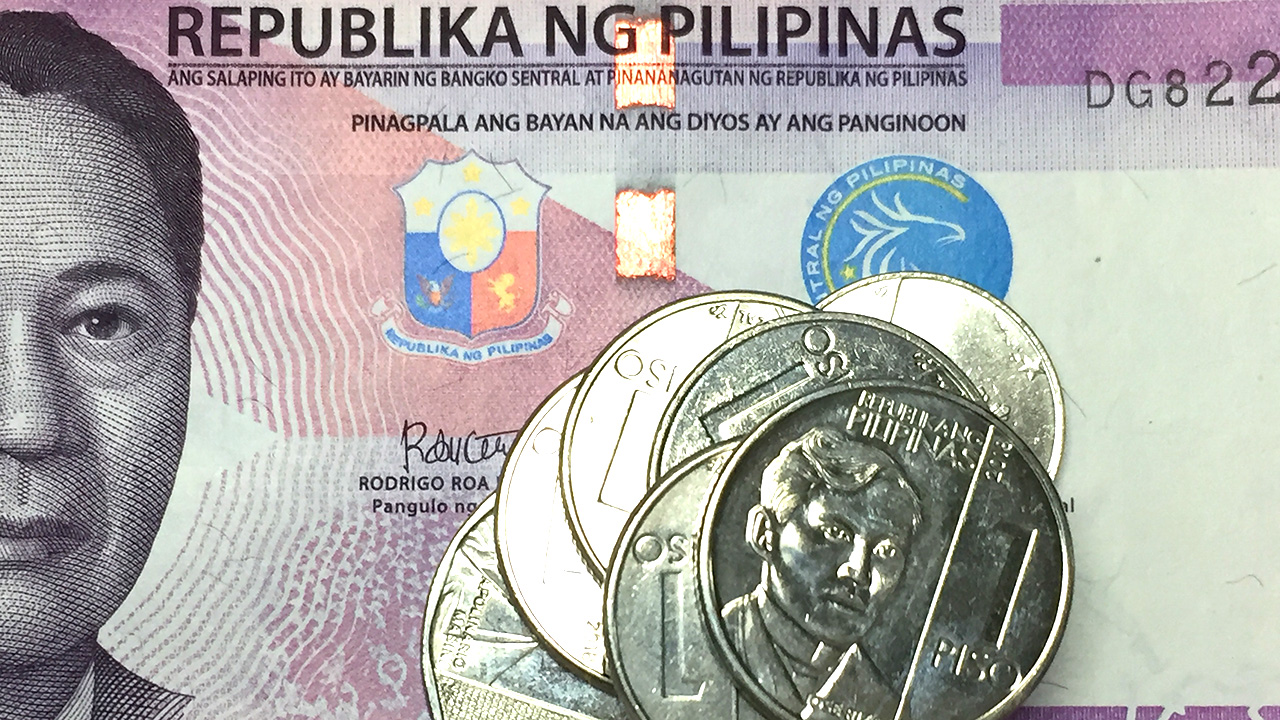Peso climbs after US PCE data

THE PESO rose to an over two-week high against the dollar on Thursday after US inflation quickened slightly last month, fanning worries over the Federal Reserve’s rate cut path.
The local unit closed at P58.671 per dollar on Thursday, strengthening by 3.9 centavos from its P58.71 finish on Wednesday, Bankers Association of the Philippines data showed.
This was the peso’s best close since it finished at P58.595 versus the greenback on Nov. 11.
The peso opened Thursday’s session a tad stronger at P58.70 against the dollar. Its intraday best was at P58.61, while its worst showing was at P58.78 versus the greenback.
Dollars exchanged increased to $1.46 billion on Thursday from $1.38 billion on Wednesday.
The peso rose following the release of data showing that the US personal consumption expenditures (PCE) price index, the Fed’s preferred inflation gauge, rose slightly last month, Rizal Commercial Banking Corp. Chief Economist Michael L. Ricafort said in a Viber message.
For Friday, Mr. Ricafort expects the peso to range from P58.55 to P58.75.
The personal consumption expenditures price index climbed 0.2% in October, matching September’s unrevised gain, Reuters reported. In the 12 months through October, the PCE price index increased 2.3% after advancing 2.1% in September.
Excluding the volatile food and energy components, the PCE price index rose 0.3%, matching the increase in September. The so-called core inflation was lifted by services, mainly housing and utilities, transportation, as well as financial services and insurance. Goods prices fell. Core inflation increased 2.8% year on year in October after climbing 2.7% in September. The central bank tracks the PCE price measures for monetary policy.
The lack of success in bringing inflation back to the Federal Reserve’s 2% target, together with the prospect of higher tariffs on imported goods from the incoming Trump administration, could narrow the scope for interest rate cuts from the US central bank next year.
President-elect Donald J. Trump said on Monday he would impose a 25% tariff on all products from Mexico and Canada, and an additional 10% tariff on goods from China, on his first day in office. Economists at Goldman Sachs estimated the tariffs, if implemented, would increase core PCE inflation by 0.9%.
The Fed is still widely expected to deliver a third rate cut in December, with other data on Wednesday showing more unemployed people were experiencing long bouts of joblessness in mid-November. Minutes of the Fed’s Nov. 6-7 policy meeting published on Tuesday showed officials appeared divided over how much farther they may need to cut rates.
The central bank reduced rates by 25 basis points earlier this month, lowering its benchmark overnight interest rate to the 4.5%-4.75% range. It initiated its policy easing cycle in September, which marked its first reduction in borrowing costs since 2020, after hiking rates by 525 basis points in 2022 and 2023 to quell inflation. — AMCS with Reuters



